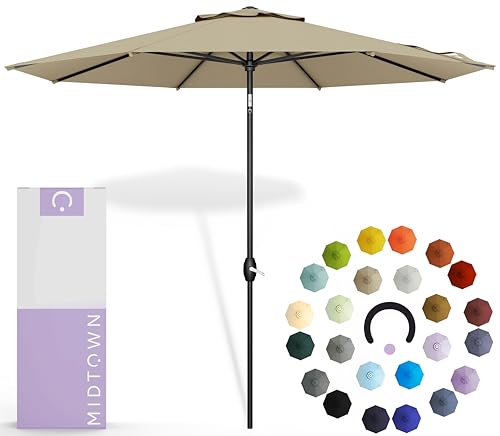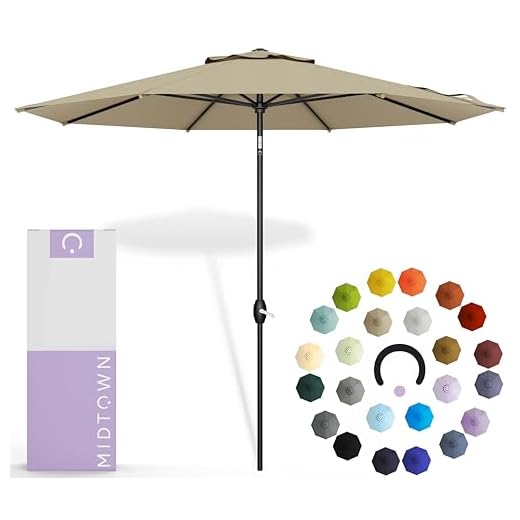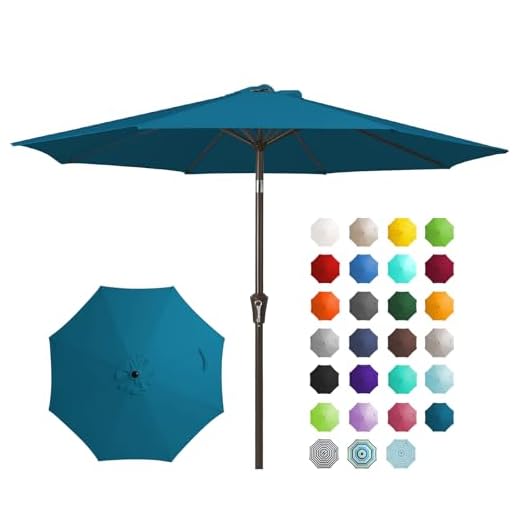
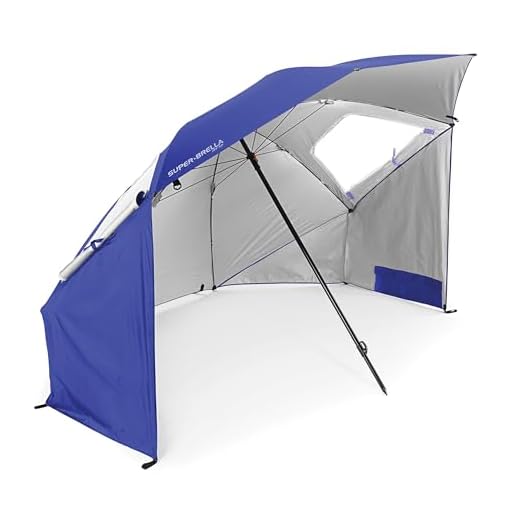
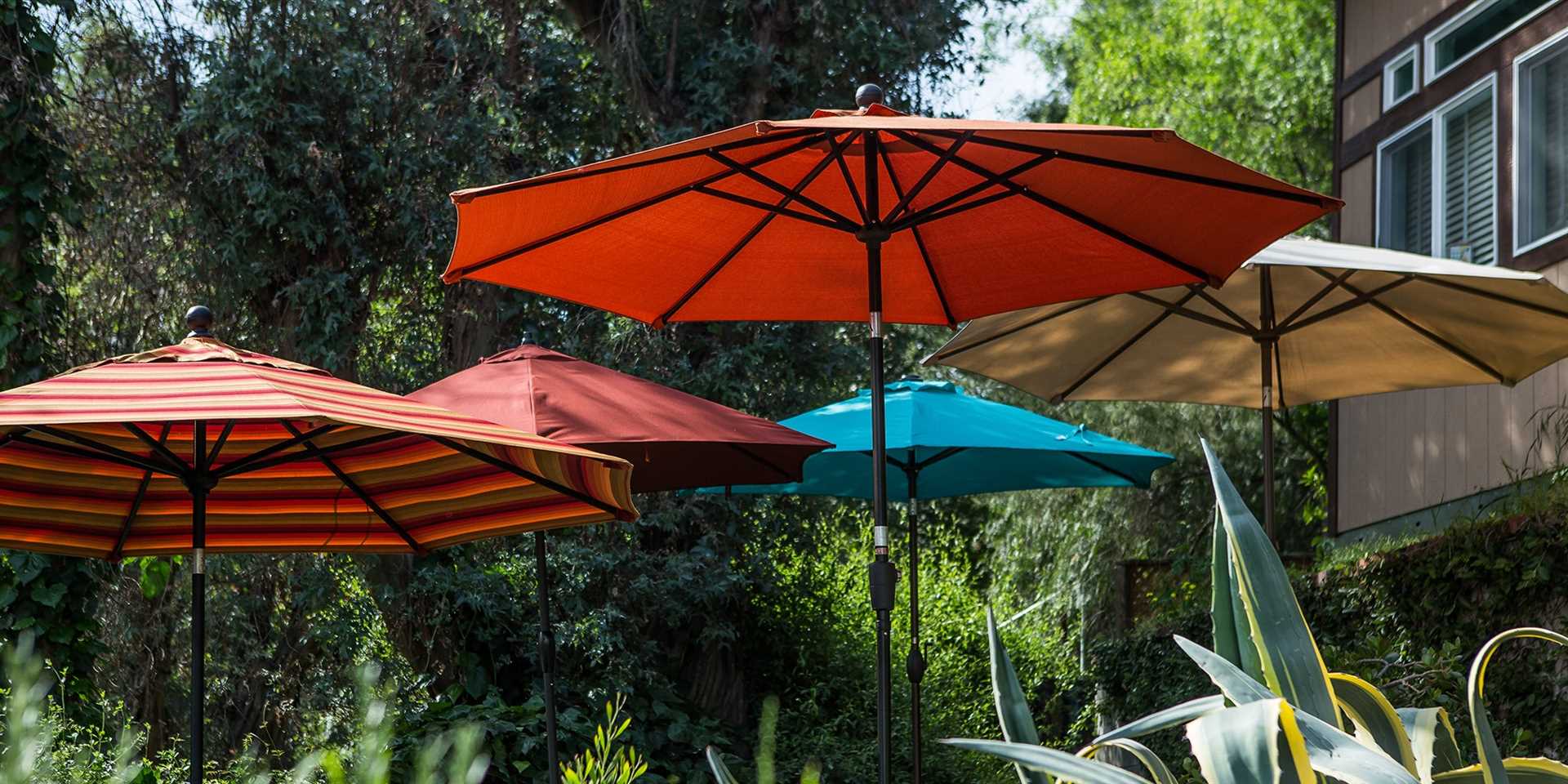
When selecting an outdoor canopy, prioritize durability and weather resistance. Fabrics such as solution-dyed acrylic and polyester stand out for their ability to withstand UV rays and repel water, ensuring longevity and protection from the elements.
This article provides insights into various fabrics commonly used in canopies, discussing their benefits and drawbacks. It is designed for homeowners, event planners, and anyone looking to enhance their outdoor spaces with functional and stylish shade solutions.
You will find a comparison of different textiles, highlighting factors like ease of maintenance, color retention, and fade resistance. By the end, you will have a clear understanding of which materials best suit your needs, helping you make an informed decision for your outdoor setup.
Best Choice for a Market Umbrella
For a reliable shade solution, opting for a durable canopy is key. Fabrics like acrylic and polyester provide excellent UV protection, ensuring a comfortable outdoor experience. Acrylic is known for its fade resistance and breathability, while polyester offers a more budget-friendly option with decent durability.
The frame’s construction also plays a significant role in longevity. Aluminum and wood are two popular choices, each with distinct advantages. Aluminum frames are lightweight and resistant to rust, making them ideal for frequent relocation. In contrast, wooden frames provide a classic aesthetic but may require more maintenance to withstand the elements.
Choosing the Right Canopy
- Acrylic: Offers superior UV resistance and is less prone to fading.
- Polyester: More affordable with reasonable UV protection; however, it may fade over time.
- Vinyl: Provides waterproof properties but can trap heat, leading to discomfort.
Frame Considerations
- Aluminum: Lightweight, rust-resistant, and easy to maneuver.
- Wood: Offers a classic look, but requires regular maintenance to ensure longevity.
Ultimately, selecting the right combination of fabric and frame will ensure that your outdoor shade solution meets your aesthetic and functional needs.
Durability: Comparing Fabrics for Longevity
When selecting a canopy for outdoor use, the longevity of the fabric is a key factor. Polyester and acrylic fabrics are commonly used due to their resistance to fading and wear. Polyester, often treated with a UV-resistant coating, can endure sun exposure and maintain its color over time. Acrylic, while generally more expensive, offers superior water resistance and breathability, making it an excellent choice for varied weather conditions.
Additionally, the weave of the fabric impacts its durability. Tightly woven materials tend to withstand the elements better than loosely woven options. A higher denier fabric indicates greater density and strength, which translates to better performance against tearing and fraying. For those in harsher climates, selecting a fabric with reinforced stitching can further enhance longevity.
Comparative Analysis of Fabrics
| Fabric Type | UV Resistance | Water Resistance | Breathability | Maintenance |
|---|---|---|---|---|
| Polyester | Good | Moderate | Moderate | Easy |
| Acrylic | Excellent | High | Good | Moderate |
| Canvas | Moderate | High | Low | High |
Choosing the right fabric involves assessing specific needs based on weather conditions and desired longevity. Acrylic fabrics, while more costly, may save money in the long run due to their durability. Conversely, polyester can be a budget-friendly option with decent longevity. Understanding these characteristics will guide the decision-making process for selecting a suitable covering.
UV Protection: Selecting the Right Canopy Material
The choice of canopy fabric significantly influences UV protection, which is crucial for outdoor enjoyment. Fabrics with a high UV rating effectively block harmful rays, reducing the risk of skin damage and heat exposure. Look for options explicitly labeled with a UV protection factor (UPF), ideally above 30, to ensure adequate shielding.
Common choices include polyester and acrylic, both known for their durability and resistance to fading. Acrylic tends to offer superior UV protection, while polyester is lighter and often more affordable. Consider the weave of the fabric; tightly woven materials generally provide better coverage against UV radiation.
Key Features to Consider
- UPF Rating: Select fabrics with a high UPF rating for optimal protection.
- Water Resistance: Some fabrics also offer water-repellent properties, adding versatility.
- Color: Darker colors can absorb more UV rays, enhancing protection compared to lighter shades.
To maintain the protective qualities of the chosen fabric, regular cleaning and care are important. Avoid harsh chemicals and direct sunlight exposure when storing the canopy. This ensures longevity and sustained UV resistance, allowing for safe and enjoyable outdoor experiences.
Water Resistance: Essential Features for Weatherproofing
Choosing a product that effectively withstands moisture is critical for outdoor use. High-quality options incorporate advanced water-repellent technologies, ensuring that they remain dry and functional even during rain showers. Look for fabrics treated with water-resistant coatings, which provide a barrier against water penetration while maintaining breathability.
Another important aspect is the stitching and seams. Reinforced seams help prevent leaks, ensuring that water does not seep through. Sealed seams or heat-welded seams offer additional protection, making the structure more resilient to harsh weather conditions.
Key Features to Consider
- Waterproof Fabrics: Materials like polyester and acrylic with a waterproof backing are ideal for keeping moisture at bay.
- UV Resistance: Alongside water resistance, look for UV-protected options to prevent fading and damage from sunlight exposure.
- Durability: High-denier fabrics provide enhanced strength against tears and abrasions, ensuring longevity in outdoor settings.
- Maintenance: Easy-to-clean surfaces help maintain water resistance over time, as dirt and grime can reduce effectiveness.
Investing in a product with these features will enhance its performance and longevity, providing reliable protection against the elements. Regular maintenance, such as cleaning and reapplying water-repellent treatments, will ensure that it continues to perform optimally, safeguarding outdoor spaces from unexpected weather changes.
Weight and Portability: Choosing Lightweight Materials
Select lightweight options such as aluminum or fiberglass for frames to enhance portability. These materials provide a balance between strength and ease of transport, making them ideal for those seeking convenience.
Consider the fabric as well; polyester and acrylic are excellent choices for canopies due to their lightness and durability. They resist fading and moisture, ensuring longevity without adding unnecessary weight.
Key Factors to Consider
- Frame Weight: Aim for frames under 10 pounds for easy handling.
- Canopy Material: Choose fabrics that are lightweight yet resistant to wear.
- Portability Features: Look for collapsible designs and carrying cases that facilitate transport.
In summary, prioritize aluminum or fiberglass for frames and lightweight fabrics like polyester or acrylic for canopies. This combination will ensure a portable and durable solution that meets your outdoor needs.
Best material for a market umbrella
Features
| Part Number | 8-LN-BLK-TER-CHESTN-N-FBA3 |
| Color | Terylast Fabric - Chestnut |
| Size | 8 Foot |
Features
| Color | Lake Blue |
| Size | 9FT |
Features
| Part Number | 0769 |
| Model | 0769 |
| Warranty | 90 Day Woot Limited Warranty |
| Color | Blue |
| Is Adult Product | |
| Release Date | 2010-10-14T00:00:01Z |
| Size | 1 |
Video:
FAQ:
What materials are commonly used for market umbrellas?
Market umbrellas are typically made from a variety of materials, each offering different benefits. The most common fabric for the canopy is polyester, which is lightweight and resistant to UV rays. Another popular option is acrylic fabric, known for its durability and color retention. For the frame, aluminum and wood are frequently used. Aluminum is lightweight and rust-resistant, while wood provides a classic aesthetic but may require more maintenance. Choosing the right material depends on your specific needs, such as durability, portability, and style.
How do I choose the best material for my market umbrella based on where I live?
Choosing the best material for your market umbrella largely depends on your local climate and how you plan to use it. If you live in a region with intense sun exposure, consider a fabric with high UV protection, like acrylic. For areas with high humidity or rain, aluminum frames are preferable due to their resistance to rust. If you typically store your umbrella indoors during bad weather, a wooden frame might be suitable for its aesthetic appeal. Additionally, think about wind conditions; a sturdier fabric like solution-dyed acrylic can withstand gusts better than lighter fabrics. Assess your environment and usage to make an informed choice.
What maintenance is required for different market umbrella materials?
Maintenance for market umbrellas varies based on the materials used. For polyester canopies, regular cleaning with mild soap and water is usually sufficient to remove dirt and stains. Acrylic fabrics may require less frequent cleaning due to their resistance to fading and mold. For frames, aluminum typically requires minimal upkeep, as it does not rust. However, wooden frames should be treated with sealants or stains periodically to protect against moisture and UV damage. Always follow care instructions specific to your umbrella’s materials to prolong its lifespan.

